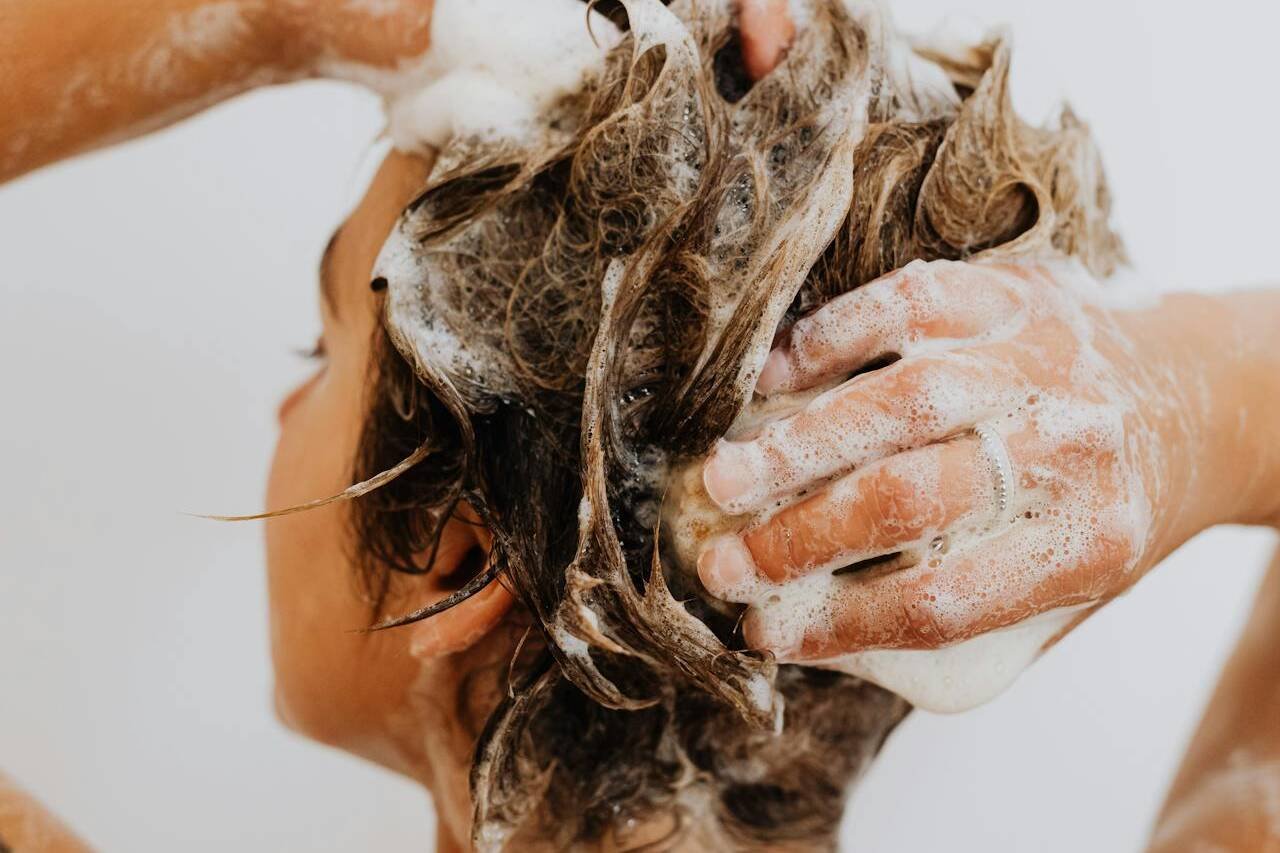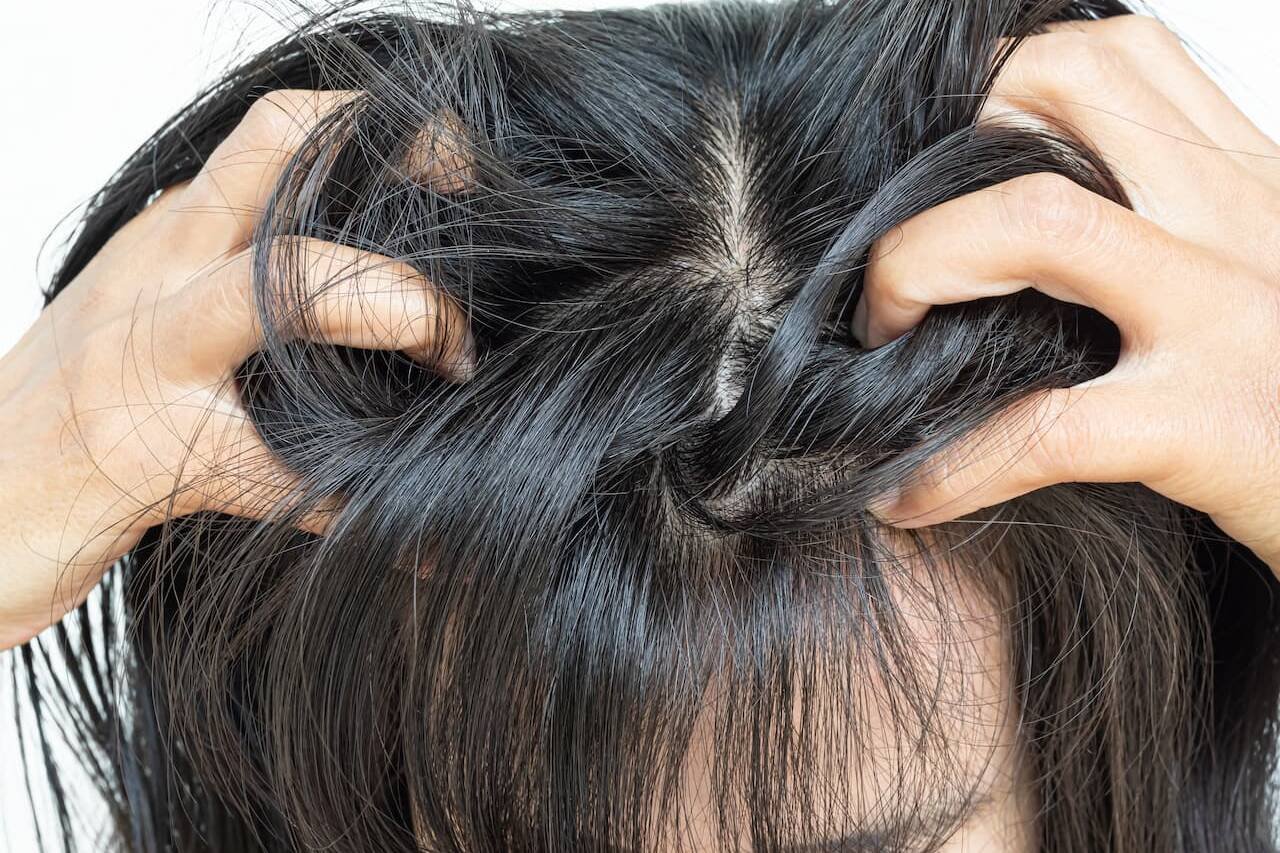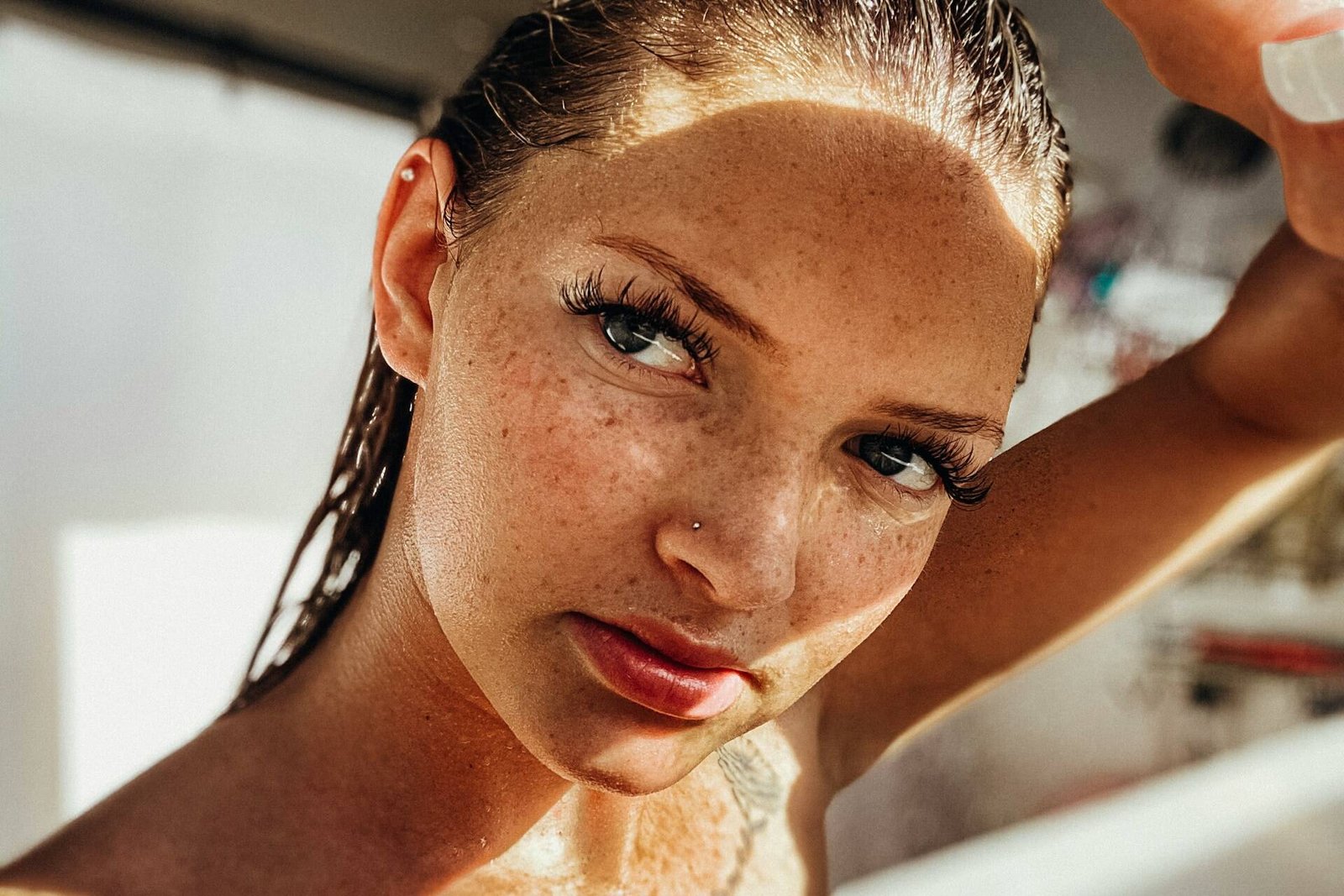The Critical First 72 Hours After Colouring
The first three days after your colour service are absolutely crucial for long-term colour retention. During this period, the cuticle layer is still settling, and how you treat your hair directly impacts how well the colour molecules stay locked inside the cortex.
Hour 0-24: Complete Water Avoidance
The Science: Research from the International Journal of Trichology shows that colour loss is most dramatic during the first wash after colouring. In fact, up to 14% of colour molecules can be lost during this initial rinse if done too soon.
Professional Technique: “I advise all my clients to wait a full 24 hours—longer for fashion colours or reds—before their first shampoo,” explains Celebrity Colourist Maya Bennett. “This allows the colour molecules to fully bind within the hair shaft and the cuticle to properly close.”
What To Do:
- Keep hair completely dry for at least 24 hours
- Avoid steam from hot showers (even if wearing a shower cap)
- Style without water-based products, using only lightweight oils if necessary
- Sleep on a silk pillowcase to minimize friction and colour transfer
Hour 24-48: pH Stabilization Period
The Science: Hair colour processing typically raises the pH of hair to open the cuticle. After colouring, your hair slowly returns to its natural, more acidic pH. Accelerating this process dramatically improves colour retention.
Professional Technique: “After the initial 24-hour period, I recommend a pH balancing treatment rather than a traditional shampoo,” advises Master Colourist Thomas Chen. “This helps return the hair to its optimal acidic state where colour molecules are most stable.”
What To Do:
- If washing is necessary, use only cool water and an acidic, colour-safe cleanser like Colour Saviour Shampoo
- Apply a pH-balancing treatment (with a pH between 4.5-5.5)
- Avoid heat styling completely during this phase
- Continue to minimize water exposure
Hour 48-72: Cuticle Reinforcement Phase
The Science: By the third day, your colour is more stable, but the cuticle may still be more vulnerable than pre-colouring. This is the perfect time to reinforce the cuticle structure to “lock in” your fresh colour.
Professional Technique: “This is when I have clients use a protein-based treatment to strengthen the cuticle,” says Colour Correction Specialist Emma Davies. “The temporary protein bonds help seal microscopic gaps in the cuticle where colour molecules might escape.”
What To Do:
- Wash with a gentle, colour-safe shampoo like Colour Saviour
- Apply a protein-based treatment containing ingredients like wheat protein
- Use cool water only
- Begin implementing your long-term colour preservation routine
Your Weekly Colour Preservation Routine
To extend your colour’s life to 8+ weeks, colourists recommend this strategic weekly routine:
Sunday: Protective Pre-Week Preparation
Morning: Apply a colour-sealing treatment containing UV protectors and antioxidants before your week begins. This creates a protective shield against the environmental stressors you’ll encounter.
Evening: Use a gentle, colour-safe cleanser like Colour Saviour Shampoo followed by a deep conditioning colour-preservation mask. Let the mask remain on hair for 15-20 minutes to deeply penetrate the hair shaft.
Professional Tip: “Sunday preparation sets the foundation for the entire week,” explains Senior Colourist Jessica Murray. “I tell clients to think of it as ‘colour insurance’ for the week ahead.”
Monday-Thursday: Minimal Intervention Period
During weekdays, minimize washing and product use:
- Stretch time between washes using dry shampoo when necessary
- When washing is required, use only colour-safe formulas like Colour Saviour
- Apply leave-in UV protection daily, especially if spending time outdoors
- Style with minimal heat, using heat protectants when necessary
Professional Tip: “The less you manipulate coloured hair during the week, the longer it will last,” advises Davies. “Think of your colour as a non-renewable resource—every wash depletes it slightly.”
Friday: Mid-Week Colour Boost
Evening: This is the ideal time for a gentle colour refresher:
- Use a colour-depositing conditioner appropriate for your shade
- Apply a gloss treatment to restore shine and vibrancy
- Focus on ends and areas showing the most fade
Professional Tip: “Regular, smaller colour boosts maintain vibrancy much more effectively than waiting for significant fade before taking action,” explains Bennett.
Saturday: Targeted Treatment Day
Morning/Afternoon: Address any specific colour concerns that have developed:
- For brassiness: Apply a tone-correcting treatment
- For dullness: Use a clarifying treatment (sparingly) followed by intensive conditioning
- For dryness: Apply a moisturizing treatment that enhances colour vibrancy
Professional Tip: “Saturday is when we address what happened during the week,” says Chen. “It’s like hitting the reset button before beginning your preservation cycle again.”
The Power of Product Layering for Colour Longevity
One of the most overlooked aspects of colour preservation is proper product layering. Used in the correct sequence, products work synergistically to maximize colour retention.
The Scientific Approach to Layering
Research from the Journal of Cosmetic Science shows that layering products in the correct order can improve colour retention by up to 26% compared to using the same products in a sub-optimal sequence.
Layer 1: The Clean Foundation Start with a sulphate-free, colour-safe cleanser specifically formulated to preserve colour, like Colour Saviour Shampoo. Its gentle cleansing agents remove impurities without stripping colour molecules.
Layer 2: Cuticle Sealing Apply a conditioner containing cuticle-sealing ingredients like wheat protein and fatty alcohols. This step temporarily fills micro-gaps in the cuticle where colour molecules escape.
Layer 3: Colour Stabilization Use a leave-in treatment with UV filters and antioxidants to prevent environmental colour degradation. This creates an invisible shield against colour-fading elements.
Layer 4: Priming Protection Before heat styling, apply a heat protectant specifically designed for coloured hair. Look for formulas that activate with heat to create a protective barrier around each strand.
Layer 5: Finishing Shield Seal your style with a lightweight, humidity-resistant finishing product that contains additional UV protection. This final layer provides ongoing defence throughout the day.
Common Layering Mistakes to Avoid
Mistake 1: Applying silicone-based products before water-based treatments Silicones create a hydrophobic barrier that prevents water-based treatments from penetrating. Always apply water-based treatments first.
Mistake 2: Using too much product Product buildup can dull colour and require clarifying treatments that accelerate fade. Use the minimum effective amount of each product.
Mistake 3: Insufficient wait time between layers Allow 1-2 minutes between product applications for optimal absorption and effectiveness.
Colour-Specific Maintenance Guides
Different hair colours require tailored maintenance approaches to reach that 8+ week mark.
For Platinum and Silver Blondes
Primary Challenges: Yellowing, dullness, dryness
Extended-Life Professional Protocol:
- Wash only 1-2 times weekly with a gentle cleanser like Colour Saviour Shampoo
- Use purple/blue toning products once weekly only (over-use causes dryness and dulling)
- Apply a clear gloss treatment weekly to maintain reflectivity
- Use a weekly bond-building treatment to maintain structural integrity
- Apply UV protection daily (blonde hair is most susceptible to sun damage)
Professional Insight: “The key to long-lasting platinum is balancing toning with moisture,” explains Blonde Specialist Sarah Johnson. “Over-toning actually accelerates colour degradation by damaging the hair structure.”
For Vibrant Reds and Coppers
Primary Challenges: Fastest fading of all colours, shifting to orange/brown
Extended-Life Professional Protocol:
- Delay first wash for 48-72 hours after colouring
- Wash with cold water only, using a colour-safe cleanser like Colour Saviour
- Apply a colour-depositing conditioner twice weekly
- Use a weekly gloss treatment specific to red hues
- Apply a weekly treatment with rosehip or cranberry seed oil (natural colour enhancers)
Professional Insight: “For my red clients aiming for 8+ week vibrancy, I recommend what I call the ‘cold approach’—cold water washing, cooling hair masks, and even storing products in the refrigerator,” shares Red Specialist Maria Lopez. “Temperature control is absolutely critical for red longevity.”
For Rich Brunettes
Primary Challenges: Dullness, unwanted warmth emerging
Extended-Life Professional Protocol:
- Use a low-pH cleanser like Colour Saviour to keep the cuticle tightly closed
- Apply a weekly blue-based gloss to control warmth
- Use coffee or black tea rinses to naturally enhance depth
- Apply a weekly treatment with walnut oil (natural colour enhancer)
- Use shine-enhancing products daily to maintain reflectivity
Professional Insight: “Brunettes often focus too much on fighting brassiness while neglecting shine,” explains Chen. “Maintaining reflectivity is actually more important for perceived colour richness than neutralizing every hint of warmth.”
For Fashion Colours (Blues, Purples, Pinks)
Primary Challenges: Rapid fading, uneven colour release, bleeding
Extended-Life Professional Protocol:
- Wash with conditioner only (co-wash) for first 2 weeks
- Use ice-cold water for all rinses
- Apply weekly vitamin C-neutralizing treatments to prevent copper water damage
- Use a colour-depositing mask twice weekly
- Apply UV protection religiously (fashion colours are highly susceptible to sun fading)
Professional Insight: “I create custom colour-preservation kits for my fashion colour clients,” shares Alternative Colour Specialist Jamie Wong. “Typically, this includes a gentle shampoo like Colour Saviour, a custom-mixed colour conditioner, and detailed washing instructions. The difference between 3 weeks and 8 weeks of vibrant colour often comes down to water temperature control and washing frequency.”
Preventing Environmental Colour Damage
Environmental factors can dramatically accelerate colour fade, but strategic protection can minimize their impact.
UV Radiation Protection
The Science: UV radiation breaks down the chemical bonds in artificial hair colour through photo-oxidation. Research shows that coloured hair exposed to summer sun for 4 hours can show the same colour degradation as 5-7 wash cycles.
Professional Protection Strategy:
- Apply a dedicated UV-protective product daily (not just on sunny days)
- Wear a hat or scarf when in direct sunlight for extended periods
- Use products containing natural UV filters like aloe vera (found in Colour Saviour Shampoo)
- Consider protective styling during high-UV months
Hard Water Defence
The Science: Minerals in hard water (calcium, magnesium, iron) attach to hair and create a dull film while also facilitating colour molecule leaching.
Professional Protection Strategy:
- Install a shower filter (removes up to 90% of damaging minerals)
- Pre-treat hair with a chelating spray before washing
- Use filtered water for final rinses
- Apply a weekly chelating treatment followed by intensive conditioning
Chlorine and Salt Water Protection
The Science: Both chlorine and salt water open the cuticle and accelerate colour fade, with chlorine actually breaking down colour molecules through oxidation.
Professional Protection Strategy:
- Pre-soak hair with fresh water before swimming (saturated hair absorbs less pool/ocean water)
- Apply a protective oil or cream to create a barrier
- Wear a swim cap for serious protection
- Rinse immediately after swimming with a gentle cleanser like Colour Saviour
Frequently Asked Questions
How soon after colouring should I start my colour preservation routine?
Immediately—but with modified steps. The 72-hour protocol outlined above should be your first priority, followed by implementation of the weekly maintenance routine. The sooner you start actively preserving your colour, the longer it will last.
Can heat styling ever be safe for coloured hair?
Yes, with proper precautions. Research shows that heat styling with appropriate protection causes significantly less colour fade than improper washing techniques. Always use a heat protectant specifically designed for coloured hair, keep tools below 185°C (365°F), and limit heat styling to 2-3 times weekly.
Will clarifying shampoos always damage my colour?
Not necessarily. Occasional clarifying (once monthly maximum) can actually improve colour appearance by removing dulling buildup. The key is to use a colour-safe clarifier followed immediately by an intensive colour-protecting treatment. For regular washing, stick with gentle cleansers like Colour Saviour Shampoo.
How does hair porosity affect colour longevity?
Significantly. Highly porous hair typically loses colour much faster due to a damaged cuticle layer that allows colour molecules to escape easily. If you have porous hair (quick to absorb water, prone to frizz, quick-drying), double down on protein treatments and cuticle-sealing products to maximize colour retention.
Can diet affect how long my colour lasts?
Yes. Research shows that diets rich in antioxidants, healthy fats, and proteins support better colour retention by improving overall hair health. Hydration is also crucial—properly hydrated hair maintains colour integrity better than dehydrated hair.
Your hair colour is an investment worth protecting. By implementing these professional techniques and understanding the science behind colour longevity, you can transform your typical 4-week colour cycle into 8+ weeks of vibrant, head-turning colour. The secret isn’t in constantly refreshing fading colour—it’s in preventing that fade from happening in the first place.
What colour longevity challenges have you faced? Share in the comments below, and our colour experts will provide personalized advice!
Related Articles
June 29, 2025
The Complete Guide to Post-Workout Hair Washing
Why Most People Are Washing Their Hair Wrong? You've invested time in…
June 7, 2025
How to Tell If You Have a Sensitive Scalp: 7 Warning Signs You Shouldn’t Ignore
Does your scalp feel uncomfortable after washing your hair? Do certain products…
May 17, 2025
Why Your Water Quality Might Be Sabotaging Your Hair Shine (And What to Do About It)
Is your shower secretly stealing your hair's shine? The water flowing through…



